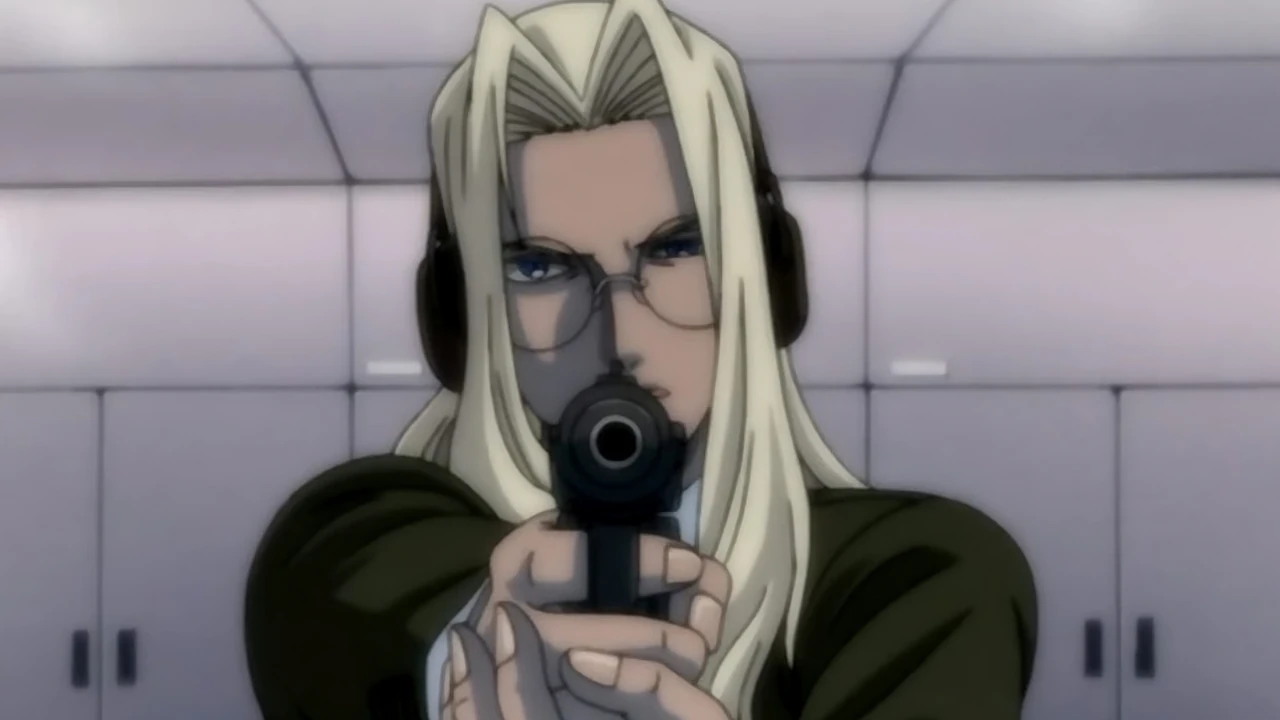paranoidphantom
31 December 2024
Hellsing (Review) [Anime]

Source: Hellsing
Release: 2001
Episodes: 13
Hellsing is a rather average anime. In 2001, the magnificent Cowboy Bebop was released, and Hellsing pales in comparison. Unlike the space western about bounty hunters, this vampire anime is short, clearly low-budget, and features an absurd plot. Even the animation, a key element of anime, is critically sparse. And yet, I adore this series, and there are three reasons for it.
Reason One: Visual Style
The first thing that catches your eye is the deep shadows. They are reminiscent of that one episode of Neon Genesis Evangelion, where the shadow swallowed Eva-02 and its pilot.
Minimalism in the color palette and backlighting further immerse you in a nocturnal scene where objects lose their familiar daylight colors and shapes. Through blue clouds, a greenish moon peeks out; black foliage rustles; silhouettes of reanimated corpses appear on the screen, and somewhere in the darkness, ancient vampire Alucard’s red eyes glow menacingly.
The camera angles are always unusual: the lines in the frame are crooked, almost deliberately distorted, and the characters’ anatomy is unsettlingly inhuman—long limbs, shifting body proportions. All of this closely resembles the phantasmagoric aesthetic of German Expressionism, particularly The Cabinet of Dr. Caligari.
Reason Two: Music
Ah, the delightful early 2000s! A time when Japanese directors often drew inspiration from Western music and incorporated it into their works. Lyrics were frequently in English or mixed with Japanese. So many examples come to mind: "Duvet" from Serial Experiments Lain, "Inner Universe" and "Lithium Flower" from Ghost in the Shell: Stand Alone Complex, and of course "The World Without Logos" from Hellsing, which fits perfectly into this lineup.
Despite its "Western" sound, the music was entirely composed by Japanese musician Yasushi Ishii. The fusion of blues, rock, and funk evokes a noir atmosphere and references London's nightlife. Instead of gothic rock, classical music, or even ambient, in this anime, vampires step out of the shadows to the tune of a bluesy guitar riffs.
Reason Three: Characters
What characters they are! Beyond their top-notch designs, their personalities and backstories are engaging and well-developed.
The female characters are particularly noteworthy. Take Victoria, for instance. She’s a charming fledgling vampire who knows less about the world of the undead than the average viewer. Tentatively, she explores her new nocturnal routine within the Hellsing organization, striving to accept her new self.
And then there’s Integra, the resolute leader of Hellsing. With an unyielding will and sharp mind, she makes fateful decisions and fully bears the responsibility for their outcomes. Integra acts with honor and dignity, but she’s not a robot—she has her fears and doubts, which only make her an even stronger, more relatable character worthy of admiration.
Conclusion
On the one hand, there’s a ridiculous plot, weak animation, and a rushed ending. On the other, there’s a unique visual style, captivating characters, and fantastic music. For me, the positives far outweigh the negatives.
Sure, Hellsing could be called trashy, but what stylish trash it is! Have you ever seen anything like it? Probably not. So be sure to add this anime to your backlog and watch it as soon as you're in the mood for a snazzy vampire story.